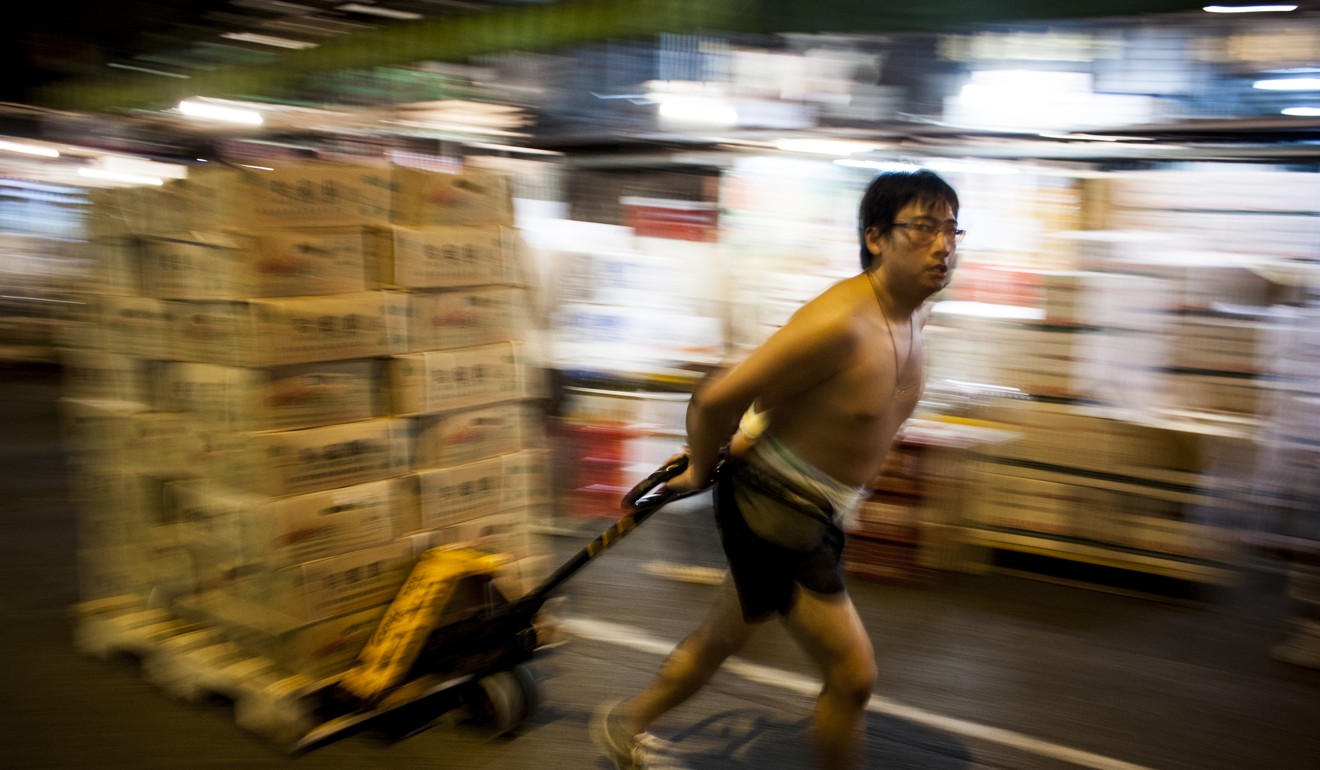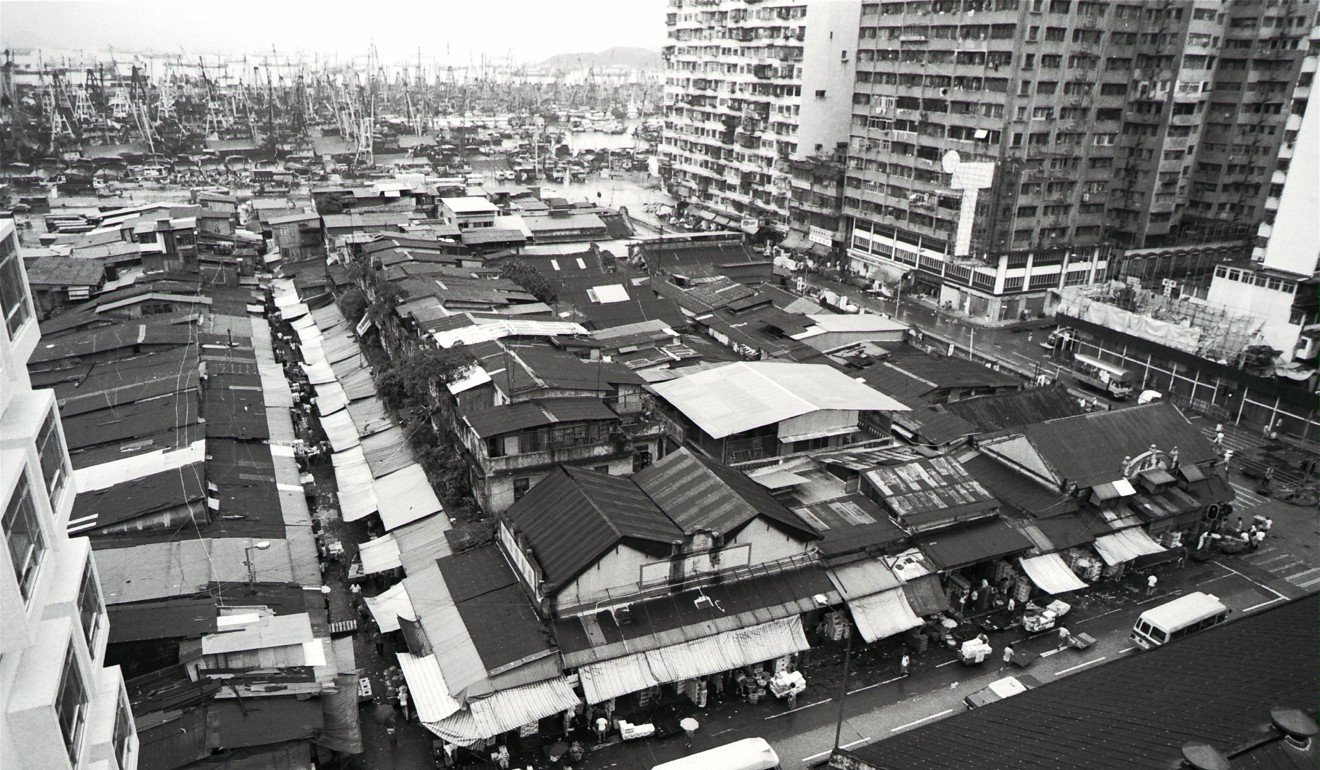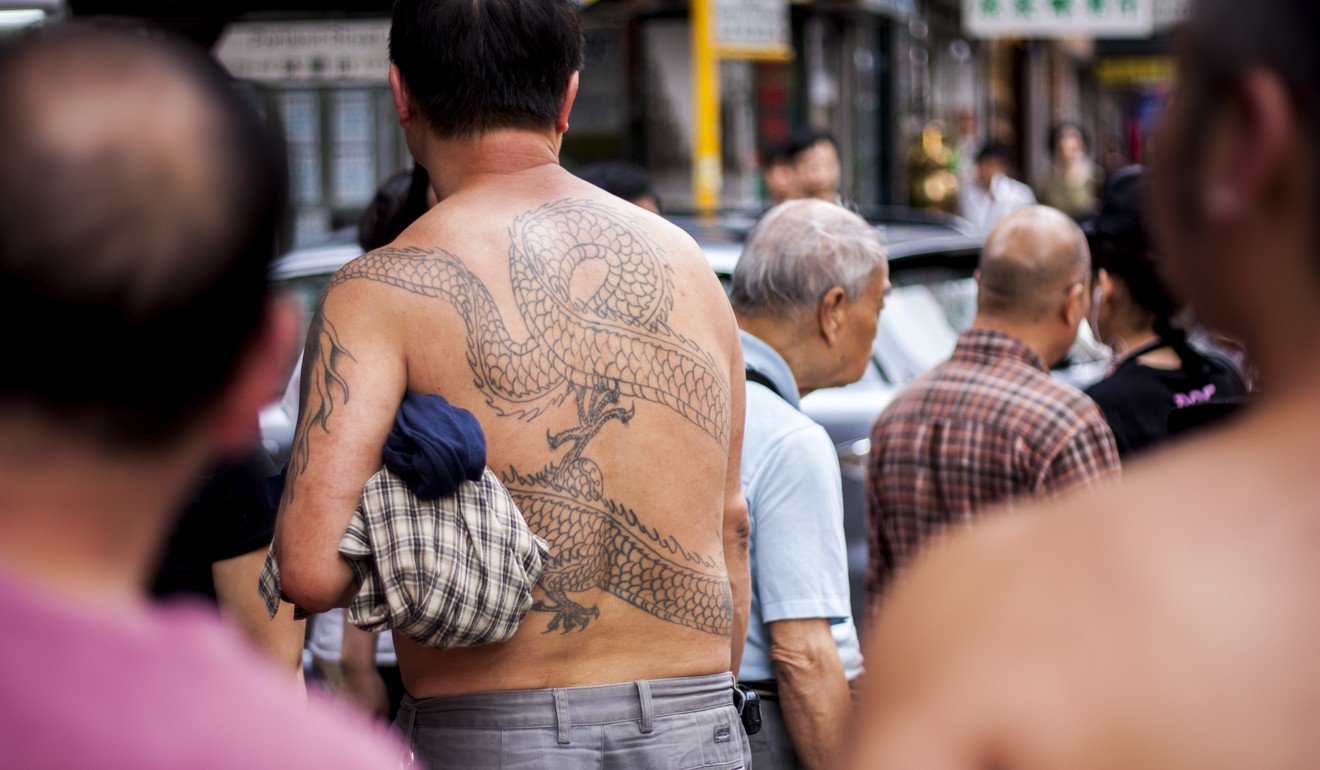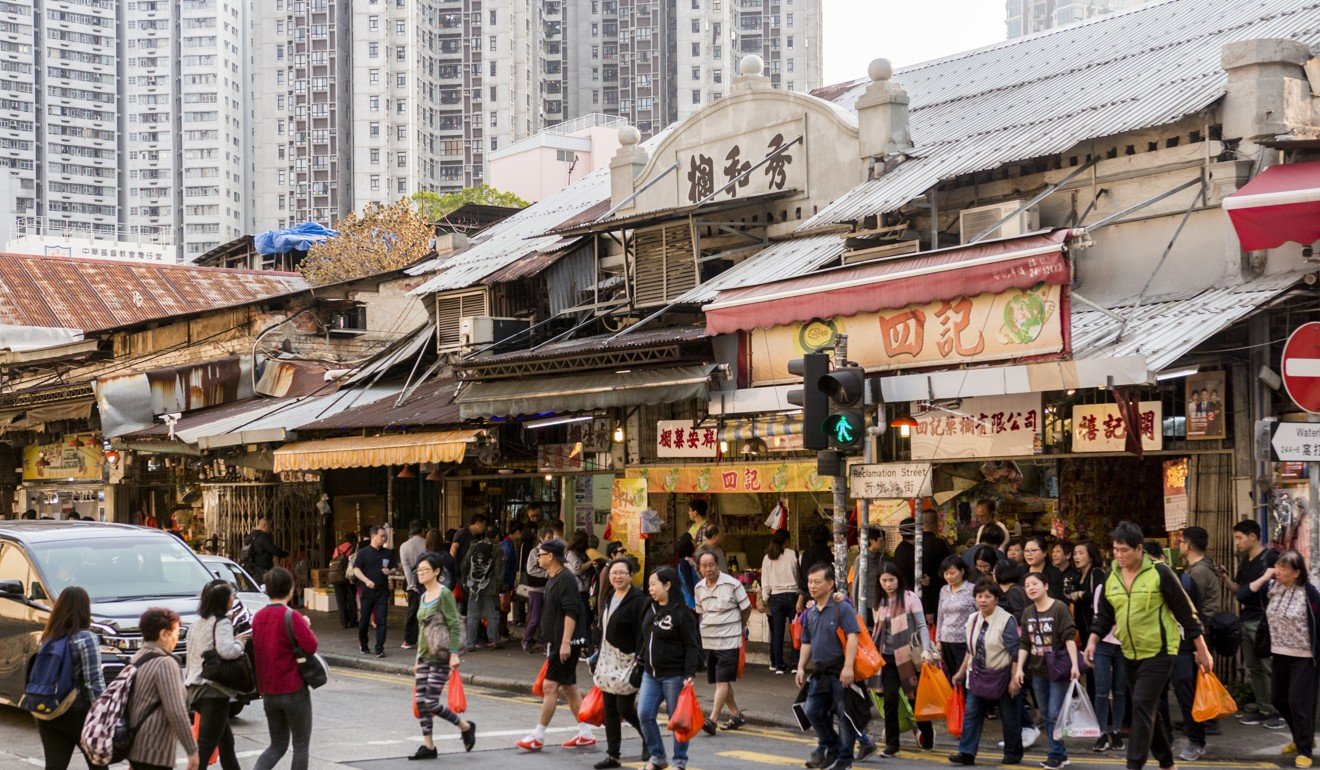
From mangoes to murders, Hong Kong wholesale fruit market in Yau Ma Tei has been a different place for over 100 years
Yau Ma Tei is one of Hong Kong's oldest and most diverse neighbourhoods. In the second instalment of our miniseries exploring facets of its history, we recall the colourful past of Gwo Laan, the city’s wholesale fruit market

There’s Yau Ma Tei – and then there’s the Gwo Laan. The wholesale fruit market that has operated at the corner of Waterloo Road and Reclamation Street since 1913 is at once an integral part of its neighbourhood and a world unto itself.
For more than a century, it has supplied Hong Kong with fresh fruit from near and far, but it has also embodied a certain roughneck side to the city’s personality.

Every night, as the sun slips behind the barge cranes in the Yau Ma Tei Typhoon Shelter, shirtless, heavily tattooed men get to work pushing and pulling boxes of pineapples, durians and oranges between warehouses and trucks. By the time the rest of the neighbourhood has gone to sleep, the Gwo Laan is just getting started, working itself into a frenzy of activity that peaks in the early hours of the morning.
With its tight cluster of tin-roofed shacks and well-worn stone buildings, the Gwo Laan doesn’t look like it has changed much since the early days of its operation. Back then, the waters of Victoria Harbour lapped directly against the market, and fruit was as likely to come in by boat as it was by truck.
In the early 20th century, the market was known as the Government Vegetables Market, and it handled all kinds of produce. (The nickname Gwo Laan came later; gwo means fruit and laan refers to a wholesale market.) Fishmongers joined the crowd in the 1930s.
Although some fruit and vegetables were imported from China, at that time most came from the city’s New Territories, which produced enough food to supply its urban areas.

A 1936 article in the South China Morning Post took a bit of poetic licence to explain how things worked.
“Attached to the laan are men called Kai-ye, literally godfather or sponsor,” it reported. “The Kai-ye goes out to the New Territory and says to the producer, ‘Let me sell for you, I'll lend you money without interest to assist your production. I'll provide baskets and I'll send men out to weigh your produce and bring it into the laan. After the stuff has been sold through the laan from market stalls to the public, I'll bring back to you the price realised by sale to the public. For all this you will pay me commission for my work and you will pay the laan commission for the laan facilities.’”
The architecture of the market reflected the prestige of the godfathers. As history enthusiast Hugh Farmer notes on his website Industrial History of Hong Kong, the market's original buildings are built with Dutch colonial-style gables and pediments, with each merchant's name carved into the pediment.
At the time, Yau Ma Tei was still a small community, and the Gwo Laan helped it become the early commercial hub of Kowloon.
The fish and vegetable operations left in 1965, when the government built new facilities in Cheung Sha Wan, West Kowloon. But the fruit business stayed on. Along the way, it developed a somewhat dodgy reputation.

In 1977, a group of five bandits walked into the market wearing surgical masks and ambushed an armoured car that was collecting money from the fruit vendors. After exchanging fire with a security guard, they grabbed the money and escaped in a waiting vehicle.
It's become a fixture of Hong Kong. Why would you tear it down?
Just a few weeks later, a second group of thieves walked into the market and seized the weekend's earnings, which were sitting in a pair of canvas bags. All told, the robberies cost the market HK$1.09 million – a huge sum of money at the time.
Perhaps it was an inside job. The market was a haven for drug dealers, and the same year as the robberies, the newly created Independent Commission Against Corruption uncovered a heroin syndicate that had been operating in the fruit market with the help of officers from the Yau Ma Tei Police Station. 86 policemen were arrested.

When the case finally made its way to court, the operators of a shooting gallery (politely dubbed a “heroin divan” by the Post) near the market revealed they had been paying HK$10,000 a day in bribes to corrupt officials.
The next few decades saw a cat-and-mouse game between police and triads, with periodic raids launched on criminal groups that had taken root in the market, such as in 1986, when police smashed a 14K triad racket that was shaking down truck drivers.
There are still occasional triad-related murders and assaults in the market, the most recent of which occurred in 2016, when the heir to one of the market's oldest businesses was slashed in the neck by masked men.

The market remains a vital part of Hong Kong – and not just because it supplies the city’s fruit. In 2016, a fire tore through 10 of the market’s stalls, raising questions about the future of this historic site. But a transformation has already taken place.
Although the nighttime wholesale trade is still going strong, since 2012 the market has added retail operations, and on weekend afternoons it is packed with customers buying pricey Malaysian durian and perfectly ripe Korean strawberries.
On a warm evening, fruit vendor Lam Yuek-kei is standing in front of a colourful stall piled high with dragon fruit and mangoes.

“It used to be you had to buy a whole box of fruit,” she says. “If you bought apples, you'd have to eat apples for the whole week! Now you can buy just one or two pieces of fruit. A lot of families come here, a lot of foreigners, because there's a lot of variety. It makes me happy.”
Lam is sanguine about the market’s future. There have been calls for it to be relocated since the 1970s, but the merchants have always resisted. “It's become a fixture of Hong Kong. Why would you tear it down?” she asks. “People come here to experience Hong Kong culture. They come here because, in their heart, there's Gwo Laan.”
Additional reporting by Daryl Chan